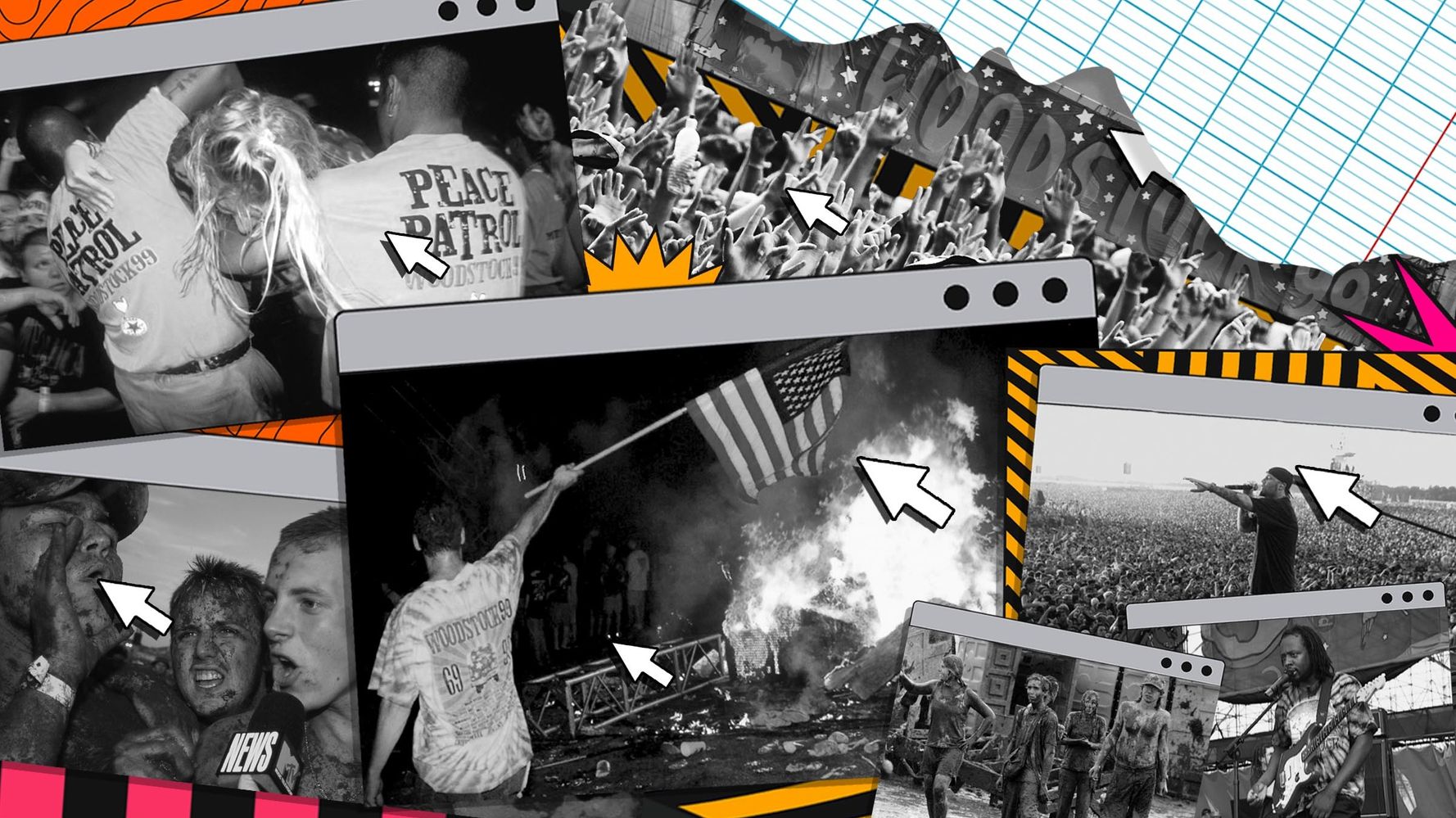If you were anywhere near a TV in the summer of 1999, images from the hellfire that was Woodstock were inescapable. The renowned three-day rock and roll festival, which once promoted messages of peace and love in its hippie era of 1969, turned into all-out anarchy at the end of the ’90s, complete with drug-fueled riots, arson, vandalism and rampant rape.
Or as a few of the folks in Netflix’s new docuseries “Trainwreck: Woodstock ’99” describe it: It was like “the fall of Hanoi” or “Lord of the Flies.”
But it was neither a war zone nor a scene from a dystopian novel. Those interviewed in the docuseries — including journalists, festival organizers, musicians and attendees — often point to a number of logistical issues that catalyzed these horrific events. Those included the insufficient security, up-charged food and drinks, and malfunctioning sanitation that somehow led to attendees walking around drenched in a mud/feces concoction.
The intense July heat and the rage anthems of some of the alternative and new metal bands that permeated across the festival, like Limp Bizkit’s “Break Stuff,” are also mentioned as motivators to the mayhem in Rome, New York.
But if you were Black and familiar with the alternative rock scene in 1999, you know that there is another troubling truth about Woodstock that still hasn’t gotten the study it deserves: Although it catered to a variety of music listeners, it was co-opted by a quarter-million mostly young white male fans who primarily attended to engage in nihilist behavior — by themselves.
They were hopped up on their own bitterness, entitlement and a consistent diet of misogyny in the era of MTV and “Girls Gone Wild.” Even if you weren’t there to see it in person, that image alone should be pure nightmare fuel.
So most people who didn’t fit into that — even those who were just as into acts like Rage Against the Machine, Korn and the Dave Matthews Band as much as anyone else — knew not to show up for Woodstock.
“Because it’s not for us,” said Laina Dawes, an ethnomusicologist and the author of “What Are You Doing Here? A Black Woman’s Life and Liberation in Heavy Metal.” As part of her work, she talks to Black women in punk, hardcore and the metal scenes.
“They wouldn’t be going to that because they would not feel comfortable going to a show where those bands are playing,” Dawes added. “They’re big Korn fans. But they also would not feel safe being in that environment.”
Truthfully, by the end of the ’90s especially, there was no typical fan of alternative rock music. That’s because the previously more underground genre had gone mainstream. It was always on the radio, and music videos like the one for Korn’s “Freak on a Leash” or Limp Bizkit’s “Nookie” were heavily played on VH1 and MTV’s “TRL,” alongside Britney Spears and Aaliyah videos.
Alternative, though still dominated by images of cynical and/or depressed white guys, went pop.
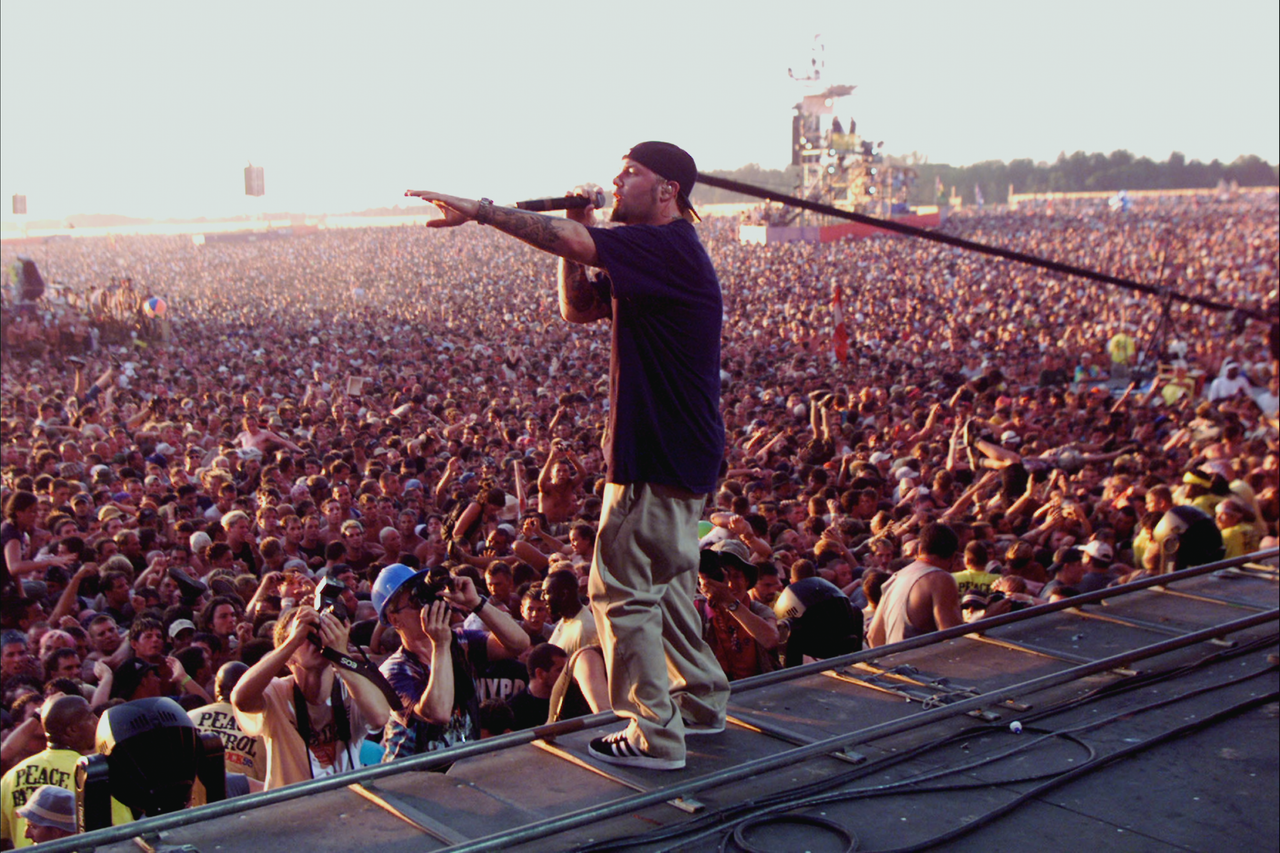
“This was a very commercially successful, aggressive music that was distributed in a manner where anybody could get it,” Dawes said. “Limp Bizkit, for instance, went directly to the mainstream, so you could buy albums at Target. Same with Rage Against the Machine.”
With its wider audience by that time, alternative rock could more easily appeal to anyone who was going through anything at that time — whether it was mental illness, low self-esteem or angst. That is to say, practically every MTV viewer, regardless of race or gender.
“They have certain anthems and phrases in their music that anybody can latch on to,” Dawes said. “The most popular one is [Rage Against the Machine’s] ‘Fuck you, I won’t do what you tell me.’”
And rebellion, even wearing a disaffected statement from your favorite band printed on a T-shirt, was alluring to a generation that was in many ways already lost by the end of the decade.
To a large swath of young white men, though, alternative music spoke directly to them and their issues and was specifically for them. As we saw at Woodstock ’99, they reacted to that in ways that showed their inherent entitlement and violent objectives more than anything else.
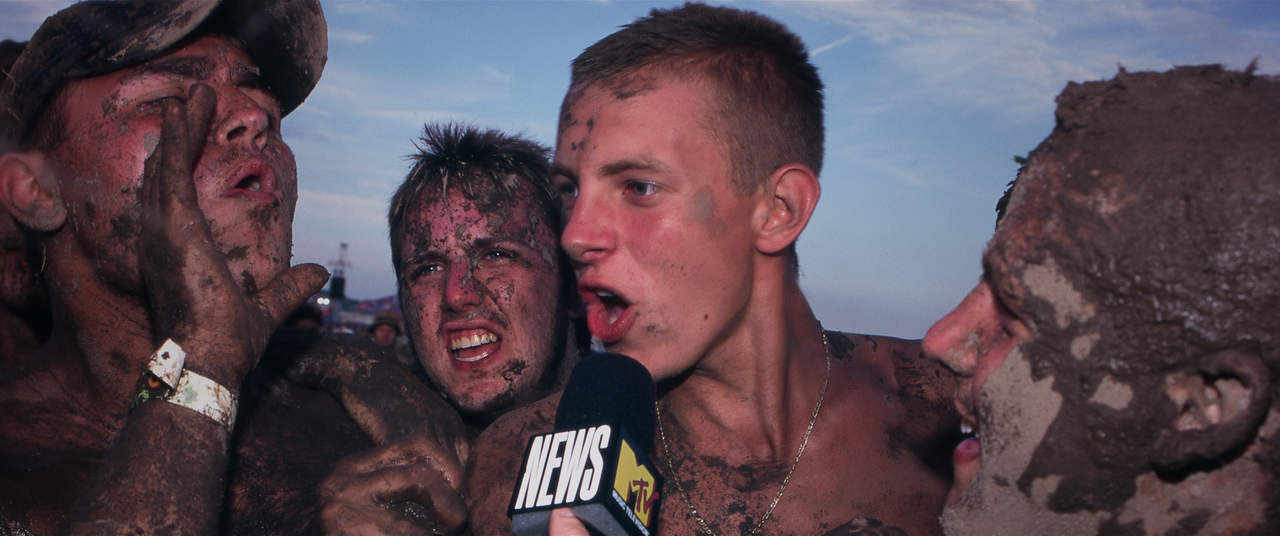
“The music and these types of festivals are perfect for that type of demographic,” Dawes said. “Because it’s the only time they can seriously let loose without having any societal constraints placed upon them.”
Because they were virtually the only ones in the audience (Dawes recalled a Black friend who attended told her it was only him “and all the security guards”). But the interesting thing about Woodstock ’99 and the way white male privilege works is that while they made up most of the faces in the crowd, they were far from the only ones at the festival.
In fact, George Clinton and the P-Funk All Stars, DMX, and Wyclef Jean and the Refugee Allstars were just a few of the Black acts that performed. Even in the alternative music space, there was Rage Against the Machine, which has mostly members of color, including its guitarist, who is Black.
For Dawes, the way young white male fans claimed this particular band, whose music was always political, is a function of white gatekeeping that persists within live rock music to this day.
“Black people are OK as long as we’re singing and dancing and performing for white people,” Dawes said. “But anything after that, hence the lyricism from Rage Against the Machine, is suspect, and you can just block it out. I don’t want to hear about that race shit.”
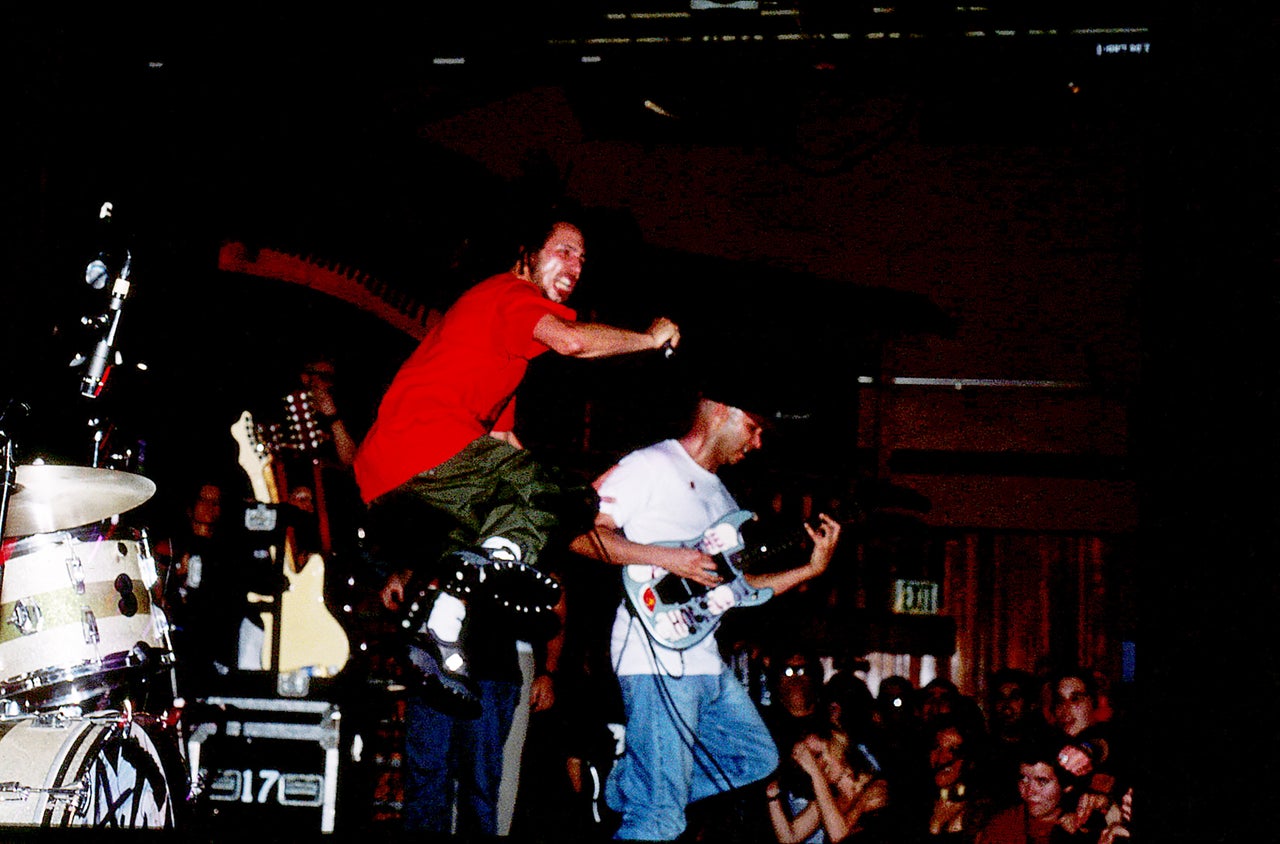
Lindsay Brice/Getty Images
Dawes has been a fan of the band since attending their first concert in her native Canada in the mid-’90s, where she and her friend were disappointed to realize they were the only Black people in the audience with mostly white “frat boys with their shirts off, beers in hand and baseball caps.” She says their message got totally lost on white audiences even back then.
“I don’t want to hear about Native Indians and Leonard Peltier and all that crap,” she added, echoing the white fans’ limited attitudes. “I don’t want to hear about the Zapatistas. So white privilege is also taking these elements from the music that they like and getting rid of the rest.”
And creating an illusion that the music is actually theirs to enjoy as well as to contort to fit their own objectives, like what happened at Woodstock ’99.
“In doing so, that doesn’t really help diversify music fans,” Dawes said. “It certainly does not work on getting Black bodies into those festivals. So there’s people that want to go, but they’re like, ‘Hell, I ain’t going to go. Look at the crowd. It’s crazy. I don’t [want to] get my ass beat.’”
That’s a shame. Particularly because the white male mob at Woodstock ’99 not only monopolized the image of alternative rock toward the end of the decade, but at this festival they also took over the crowds for performing acts in other genres, like DMX, Sheryl Crow and Alanis Morissette. And corrupted their messages to fit inside their savagery as well.
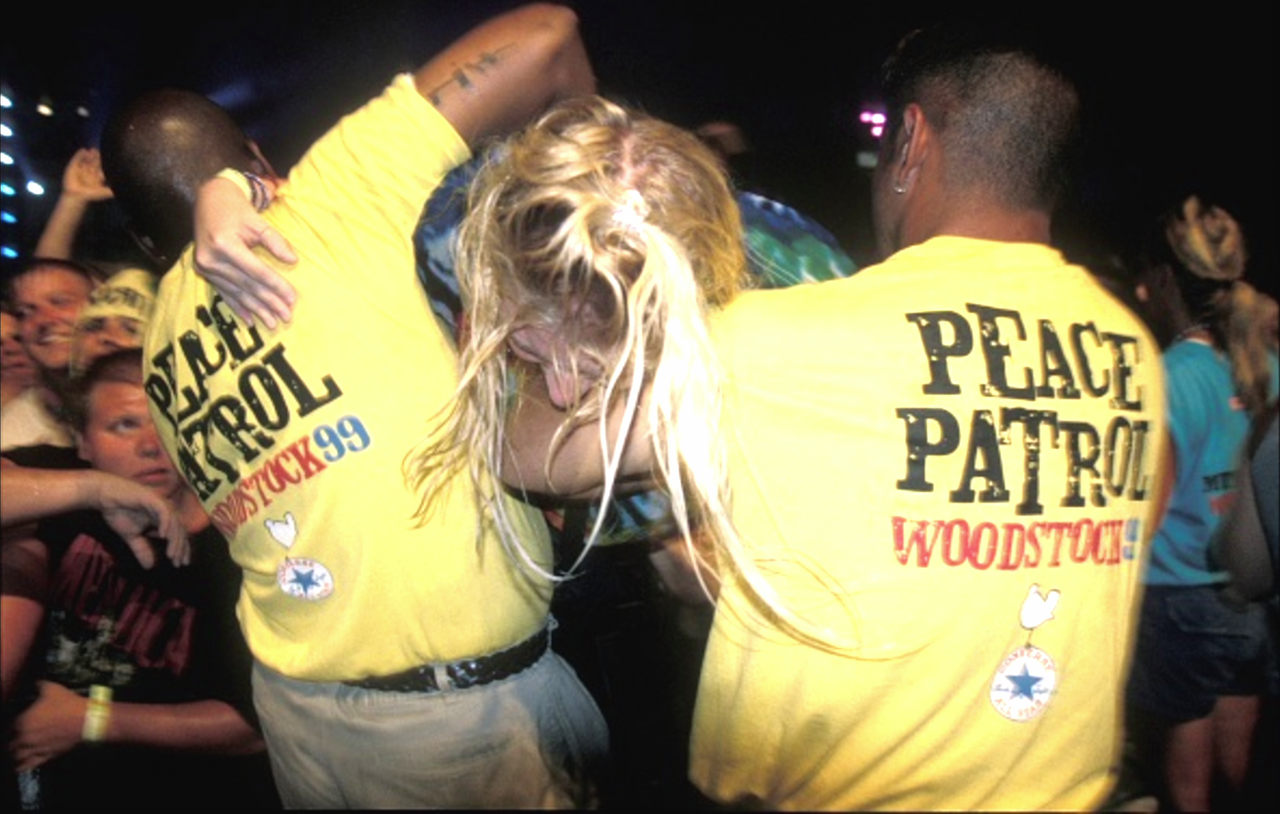
But that is what white male rock supremacy looked like at the end of the ’90s. It was holding up a sign in the audience demanding women like Crow and fellow feminist performer Jewel show them their “tits” or it was listening to the angry, personal lyrics of DMX and his use of the N-word and justifying chanting it along with him.
Because within this space, they felt justified doing so more than anywhere else.
“I think that there’s a lot of voyeurism within new metal in general because it allows white kids to think that they can behave in ways and get away with it, knowing that if Black folks did the same thing that they were doing, they’d be in jail,” Dawes explained. “There’s a power in that.”
But it further marginalizes both the nonwhite male performers, putting them in a similar danger as the many white female fans who were allegedly assaulted, and it shuts out all potential for a more diverse crowd.
“We are gatekeeping, and this is a men’s event,” Dawes said. “But it’s not. And it never was. And it was never aimed to be. [Festivals] want all different bodies in there.”
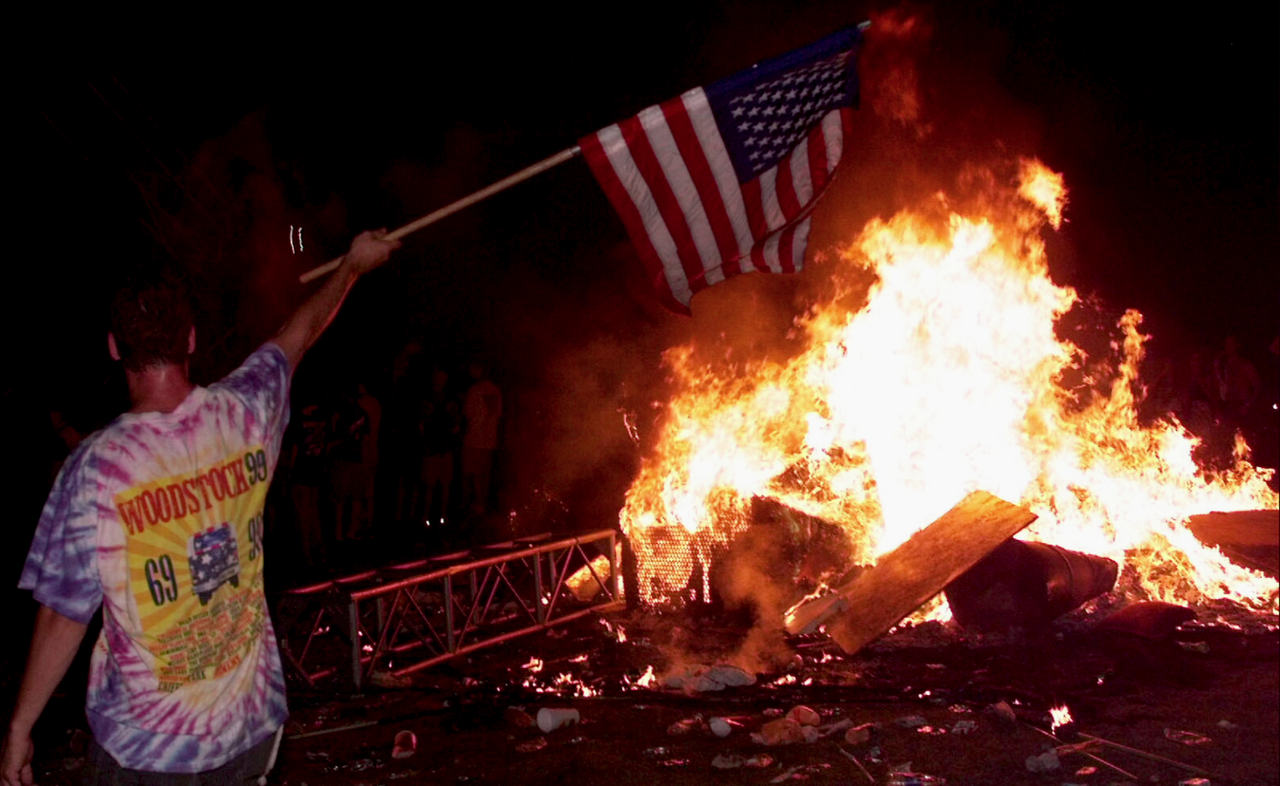
Woodstock ’99 obviously didn’t reflect that, though. What it became is yet another chapter in a long and enduring history of young American white men empowered by the twisted notion that their grievances give them permission to run amok.
“Right now, we’re living in a world where — look at all the mass shootings that are happening by young white men,” Dawes said. “Look at all the violence that is happening from white men.”
She pauses for a brief moment before getting to the crux of what’s not being talked about enough in conversations about Woodstock ’99.
“I mean, people are losing their ever-loving minds right now, but yet there will never be a kumbaya, come-to-Jesus moment, Let’s look at the pathology of white males and why they react with so much violence. Because those white people reflect the majority.”
